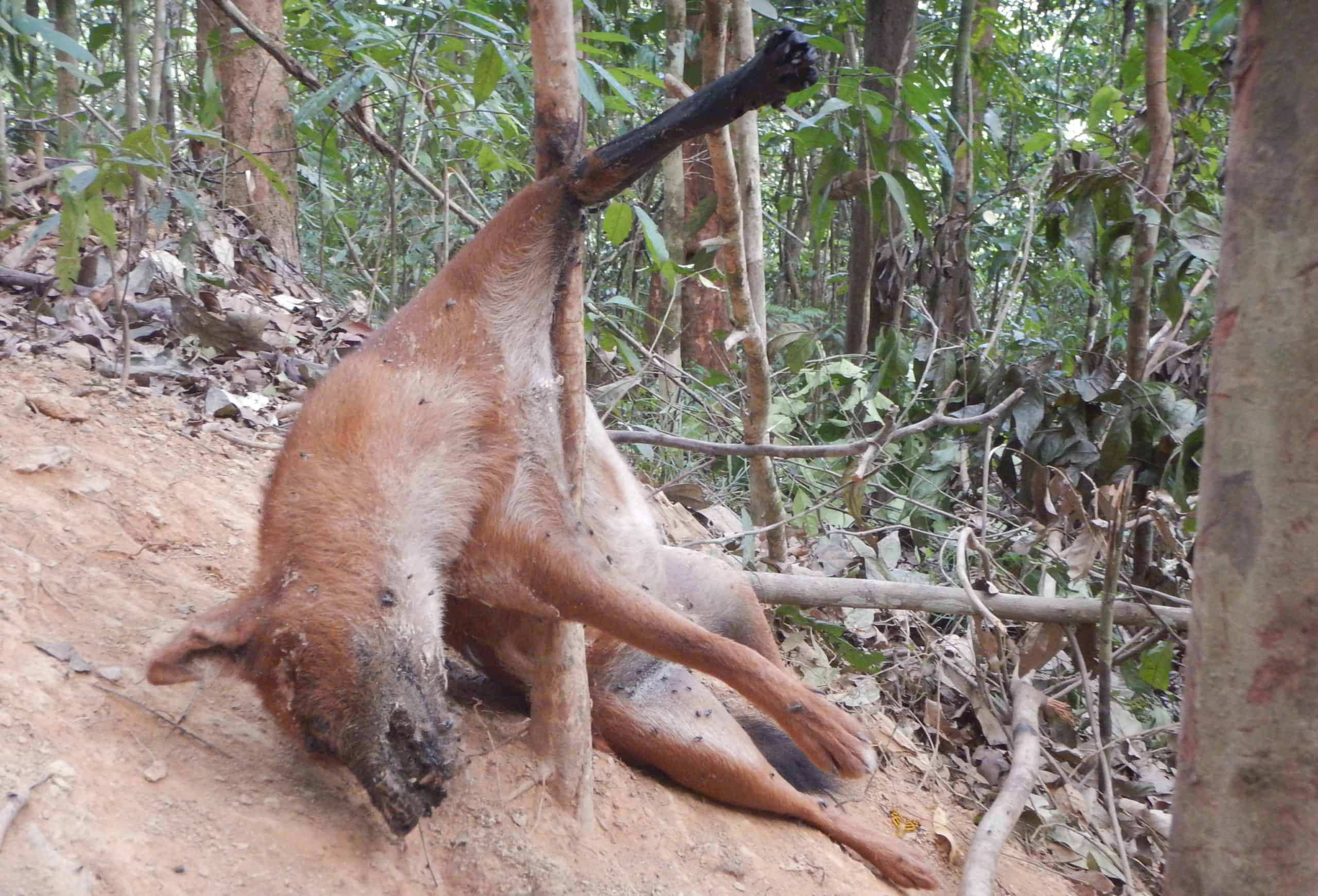

Subsequent studies on the canid genome revealed that the dhole and African wild dog are closely related to members of the genus Canis. Some authors consider the extinct Canis subgenus named Xenocyon as ancestral to both the genus Lycaon and the genus Cuon. Subsequent authors, including Juliet Clutton-Brock, noted greater morphological similarities to canids of the genera Canis, Dusicyon, and Alopex than to either Speothos or Lycaon, with any resemblance to the latter two being due to convergent evolution. George Simpson placed the dhole in the subfamily Simocyoninae alongside the African wild dog and the bush dog, on account of all three species' similar dentition. The dhole's distinctive morphology has been a source of much confusion in determining the species' systematic position among the Canidae. The fossil record indicates that the species also occurred in North America, with remains being found in Beringia and Mexico. and at Riparo Fredian in northern Italy The vast Pleistocene range of this species also included numerous islands in Asia that this species no longer inhabits, such as Sri Lanka, Borneo and possibly Palawan in the Philippines. The dhole became extinct in much of Europe during the late Würm period, though it may have survived up until the early Holocene in the Iberian Peninsula. Late Middle Pleistocene dholes were virtually indistinguishable from their modern descendants, save for their greater size, which closely approached that of the gray wolf. alpinus itself arose during the late Middle Pleistocene, by which point the transformation of the lower molar into a single cusped, slicing tooth had been completed. majori had lost the last lower molar altogether. It resembled Canis in its physical form more than the modern species, which has greatly reduced molars, whose cusps have developed into sharply trenchant points. The earliest known member of the genus Cuon is the Chinese Cuon majori of the Villafranchian period. The first study on the origins of the species was conducted by paleontologist Erich Thenius, who concluded that the dhole was a post-Pleistocene descendant of a golden jackal-like ancestor. Hodgson later took note of the dhole's physical distinctiveness from the genus Canis and proposed the genus Cuon.

This northern Russian range reported by Pallas during the 18th and 19th centuries is "considerably north" of where this species occurs today.Ĭanis primaevus was a name proposed by Brian Houghton Hodgson in 1833 who thought that the dhole is a primitive Canis form and the progenitor of the domestic dog. Factors contributing to this decline include habitat loss, loss of prey, competition with other species, persecution due to livestock predation and disease transfer from domestic dogs.Ĭanis alpinus was the binomial name proposed by Peter Simon Pallas in 1811, who described its range as encompassing the upper levels of Udskoi Ostrog in Amurland, towards the eastern side and in the region of the upper Lena River, around the Yenisei River and occasionally crossing into China. It is listed as Endangered by the IUCN as populations are decreasing and are estimated at fewer than 2,500 adults. In tropical forests, the dhole competes with tiger and leopard, targeting somewhat different prey species, but still with substantial dietary overlap.

It is a diurnal pack hunter which preferentially targets medium- and large-sized ungulates. Such clans usually consist of 12 individuals, but groups of over 40 are known. The dhole is a highly social animal, living in large clans without rigid dominance hierarchies and containing multiple breeding females. During the Pleistocene, the dhole ranged throughout Asia, Europe, and North America but became restricted to its historical range 12,000–18,000 years ago. It is genetically close to species within the genus Canis, but distinct in several anatomical aspects: its skull is convex rather than concave in profile, it lacks a third lower molar and the upper molars sport only a single cusp as opposed to between two and four.

Other English names for the species include Asian wild dog, Asiatic wild dog, Indian wild dog, whistling dog, red dog, and mountain wolf. The dhole is a canid native to Central, South, East Asia, and Southeast Asia.


 0 kommentar(er)
0 kommentar(er)
